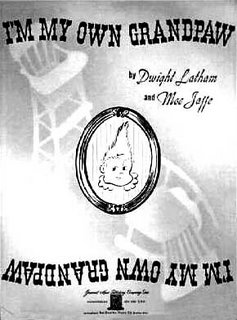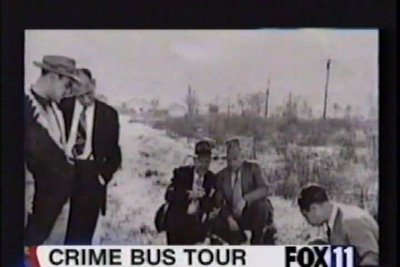Blogging the Wolfe Book, I'm My Own Grandpaw

In the Black Dahlia books, all roads lead to William Randolph Fowler and it would be interesting to see how a sociologist would make a graph of the incestuous literary kinship system.
Will talks to Mary Pacios, who collaborates with John Gilmore on “Severed.”
Will talks to Donald H. Wolfe (“Mogul,” footnotes Pages 361-362).
But there’s more.
Will talks to Robert “I was married to Marilyn Monroe for three days until the studios scotched the deal” Slatzer. “Reporters,” Pages 286-288.
In fact, Will told me repeatedly that he was the ghostwriter on Slatzer’s bogus 1974 book “The Life and Curious Death of Marilyn Monroe.”
“Until recently I considered Slatzer to be a harmless faker—that is, when he lately deceived an entire network with a made-for-TV movie with a title something like, “Marilyn and Me.” (“Reporters,” Page 288).
But wait. There’s more.
Wolfe also talks to Slatzer. In fact Wolfe, the author of “The Last Days of Marilyn Monroe” and “The Assassination of Marilyn Monroe,” mentions Slatzer in his acknowledgements as a friend and contributor. (“Mogul,” Page 322).
And....
Wolfe talks to John Gilmore, who provides a jacket blurb: "A haunting account, destined to become a true crime classic. A must read!"
But wait. There’s still more.
In the unpublished version of “Severed,” in the Gilmore archives at UCLA, there’s a ridiculous section claiming that Elizabeth Short had a lesbian affair with (surprise) Marilyn Monroe, as told by, yes, Robert "I was married to Marilyn Monroe for three days until the studios scotched the deal" Slatzer.
I would be hard-pressed to pick a group of writers less likely to tell the truth than this crowd.
The most interesting thing about all of this is that when I met Wolfe at the district attorney’s office as he was going through the Black Dahlia files, he was incredibly disparaging about—William Randolph Fowler. In fact he told me a very interesting story about a restraining order involving Will. So imagine my surprise to find Will so heavily credited in “Mogul.”
Page 17
Back in those days, few people had television. The one Los Angeles television station, KTLA, was only on the air for three hours in the evening, and the news still belonged to the paper and ink and the radio waves.
For the record, there were two TV stations in Los Angeles in 1947: KTLA and Don Lee’s W6XAO. But at the time TV sets were incredibly rare and broadcasts consisted of test patterns and “Queen for a Day.” Of course television didn’t really get underway until March with the heavily promoted “T-Day.” See the 1947 Project for much, much more on television in early Los Angeles.
The good news is we’re finished with Chapter 1. The bad news is my head is spinning for trying to unravel the tangled web of Dahlia writers. I have to go for a walk.
Bonus picture: Will Fowler and Ray Pinker on the sidewalk at the crime scene. Note that Pinker’s hands are in his pockets, exactly what you’d expect from the head of the crime lab. The only person close to the body is Gilbert Laursen, the LAPD photographer. No cigarette butts and no blackened flashbulbs, just as I said yesterday. I don't like posting the crime scene pictures. I'm showing this intentionally murky image simply to prove that the investigators didn't mishandle the crime scene, as is so frequently claimed.
Labels: 1947, Black Dahlia, Books and authors, LAPD, Photography, Streetcars




0 Comments:
Post a Comment
<< Home